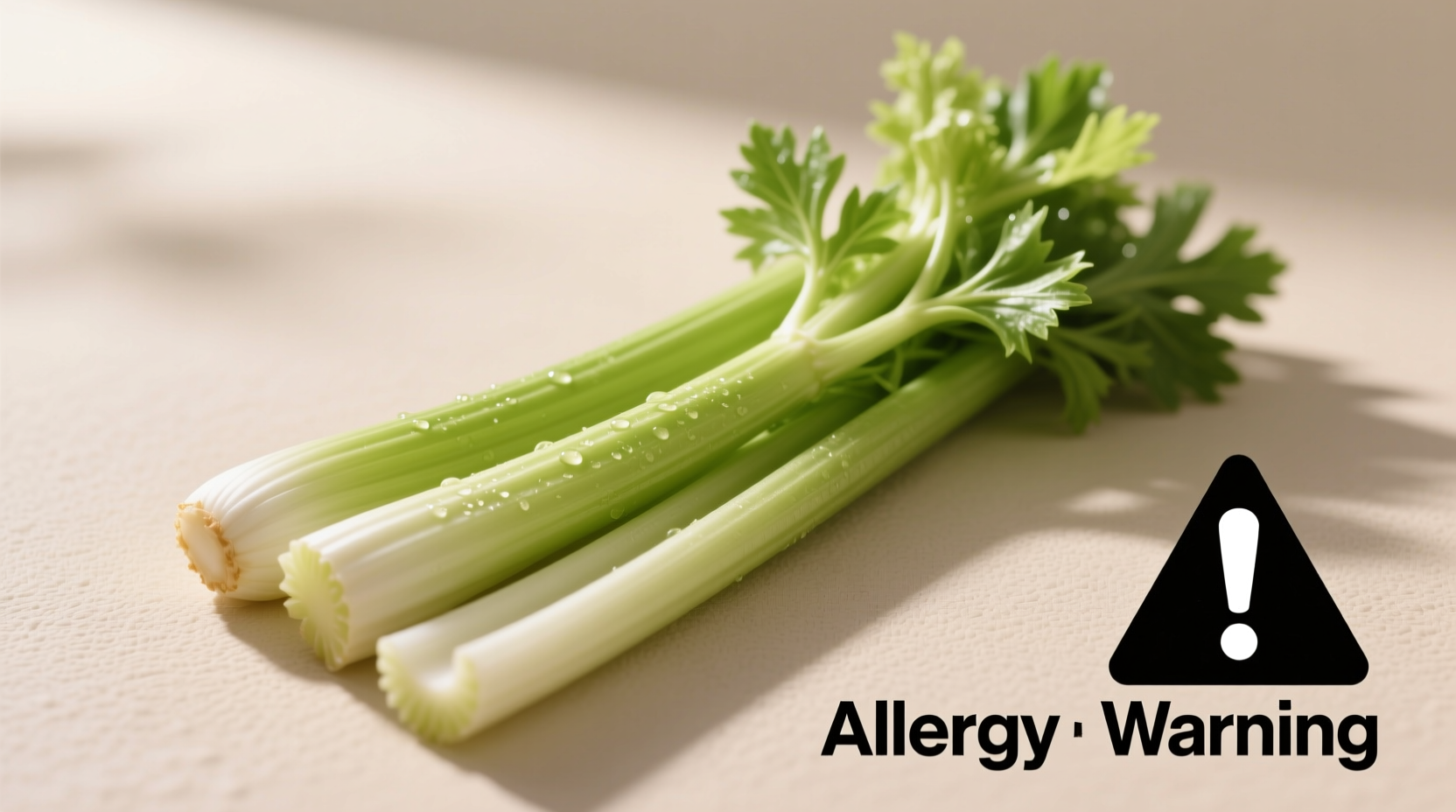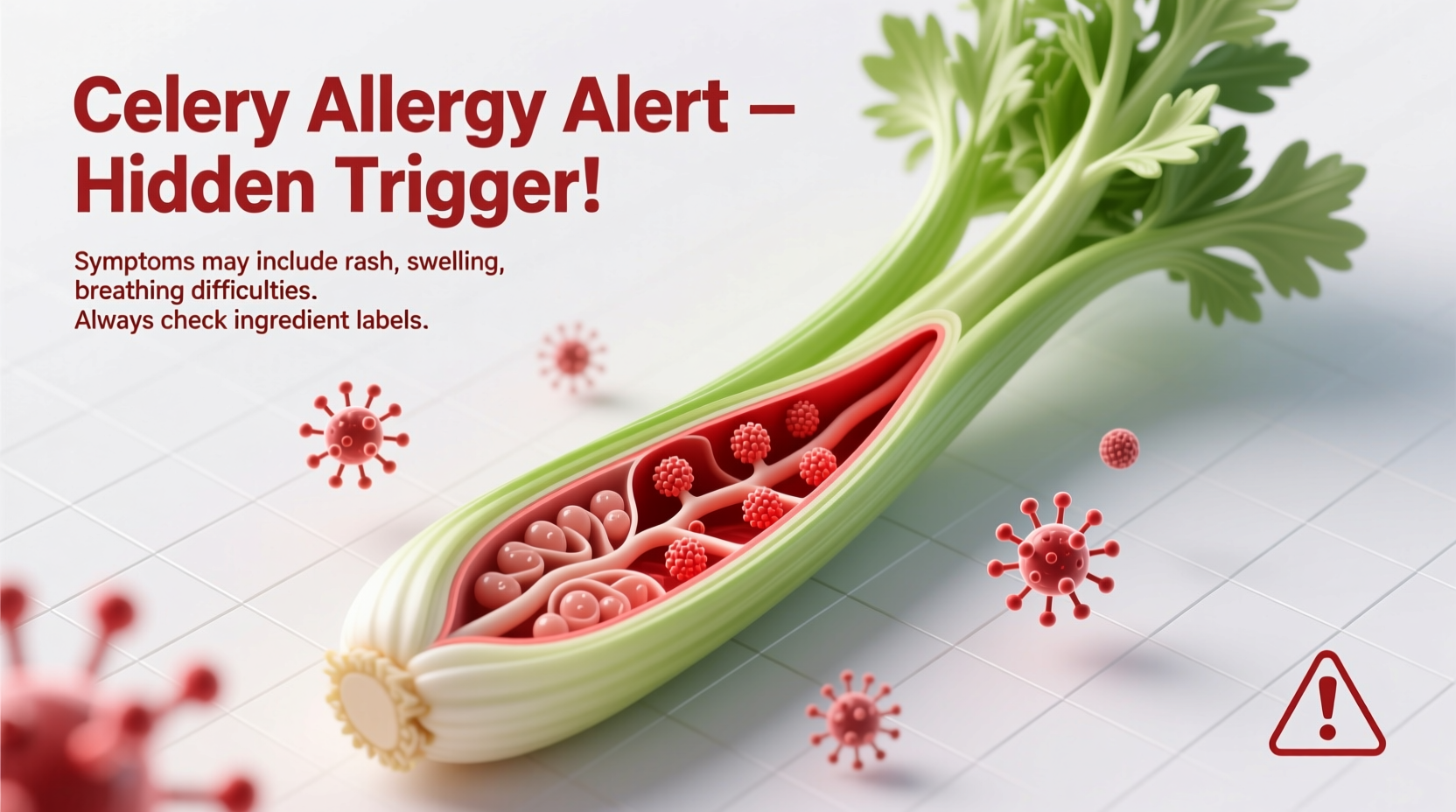Understanding Celery Allergy: More Than Just a Vegetable Sensitivity
If you're experiencing unexplained reactions after eating soups, salads, or even certain spice blends, you might be dealing with celery allergy. Unlike many food allergies that primarily affect children, celery allergy often develops in adulthood and is particularly prevalent across Europe, where it ranks among the top 10 food allergens requiring mandatory labeling.
Recognizing the Symptoms: From Mild to Life-Threatening
Celery allergy symptoms can manifest within minutes of exposure and vary significantly in severity:
- Mild reactions: Itching in the mouth, lips, or throat (common with raw celery)
- Moderate reactions: Hives, facial swelling, gastrointestinal distress
- Severe reactions: Difficulty breathing, drop in blood pressure, anaphylaxis
Unlike pollen food syndrome (oral allergy syndrome), which typically causes only mild oral symptoms, true celery allergy involves the immune system's IgE antibodies and can lead to systemic reactions even with cooked celery. This distinction is crucial for proper management.

Diagnosis: Confirming Your Suspicions
Self-diagnosis of food allergies can be dangerous. If you suspect celery allergy, consult an allergist who may recommend:
- Skin prick testing: Introducing small amounts of celery extract to your skin
- Specific IgE blood testing: Measuring antibody levels to celery proteins
- Oral food challenge: Supervised consumption of celery under medical observation (the gold standard)
According to the American Academy of Allergy, Asthma & Immunology, accurate diagnosis is critical because celery allergy often coexists with other vegetable allergies, particularly in the Apiaceae family (carrots, parsley, fennel).
Hidden Sources of Celery: Where You Least Expect It
Celery's presence extends far beyond the obvious stalks in your salad. This versatile ingredient hides in numerous products, making label reading essential:
| Common Products | Hidden Celery Forms | Alternative Choices |
|---|---|---|
| Broths and stocks | Celery salt, celery powder | Homemade broth with labeled ingredients |
| Seasoning blends | Celery seed, celery flakes | Single-ingredient herbs |
| Processed meats | Celery juice (as preservative) | Fresh meats with simple ingredients |
| Alcoholic beverages | Celery bitters in cocktails | Clear spirits with known ingredients |
The U.S. Food and Drug Administration requires labeling of major allergens, but celery isn't among the top 9 required allergens in the United States (though it is in the EU). This regulatory difference creates additional challenges for American consumers.
Practical Management Strategies for Daily Living
Successfully managing celery allergy requires both vigilance and practical strategies:
When Dining Out
- Always inform servers about your allergy before ordering
- Avoid restaurants specializing in French, Italian, or Mediterranean cuisine where celery is commonly used
- Request that your meal be prepared in a clean area with fresh utensils
- Be cautious with "vegetable broth" or "seasoned with herbs" descriptions
When Cooking at Home
- Create your own spice blends using single-ingredient herbs
- Replace celery in recipes with jicama or bok choy for similar crunch
- Use lemon zest or fennel fronds for aromatic qualities without risk
- Designate specific cutting boards and utensils for allergy-safe cooking
Emergency Preparedness: Don't Wait Until It's Too Late
For those with moderate to severe reactions, emergency planning is non-negotiable:
- Carry epinephrine: Two doses of epinephrine auto-injector at all times
- Wear medical ID: Bracelet identifying your celery allergy
- Develop an action plan: Clear instructions for family, friends, and coworkers
- Regular check-ins: Schedule annual appointments with your allergist
The National Institute of Allergy and Infectious Diseases emphasizes that having an emergency action plan reduces severe reaction fatalities by 76% when properly implemented.
Special Considerations: Context Matters
Celery allergy management varies based on several contextual factors:
- Geographic location: In Europe, celery is a mandatory labeled allergen; in the US, it's not
- Age of onset: Adult-onset allergies often persist, unlike many childhood allergies
- Cross-reactivity: 60-70% of celery-allergic individuals also react to birch pollen
- Processing method: Cooking may reduce but doesn't eliminate risk for true IgE-mediated allergy
According to research published in Clinical and Translational Allergy, celery allergy severity can fluctuate seasonally, with heightened reactions during spring pollen season due to cross-reactivity with birch pollen.
Living Well With Celery Allergy: Long-Term Perspective
While celery allergy requires vigilance, it shouldn't limit your quality of life. Many individuals successfully manage this condition through:
- Building relationships with understanding restaurant staff
- Connecting with allergy support communities for recipe sharing
- Working with a registered dietitian to ensure nutritional balance
- Staying informed about emerging treatments like oral immunotherapy trials
Remember that food allergy management is highly individualized—what works for one person may not work for another. Regular consultation with your allergist ensures your approach remains evidence-based and appropriate for your specific situation.











 浙公网安备
33010002000092号
浙公网安备
33010002000092号 浙B2-20120091-4
浙B2-20120091-4